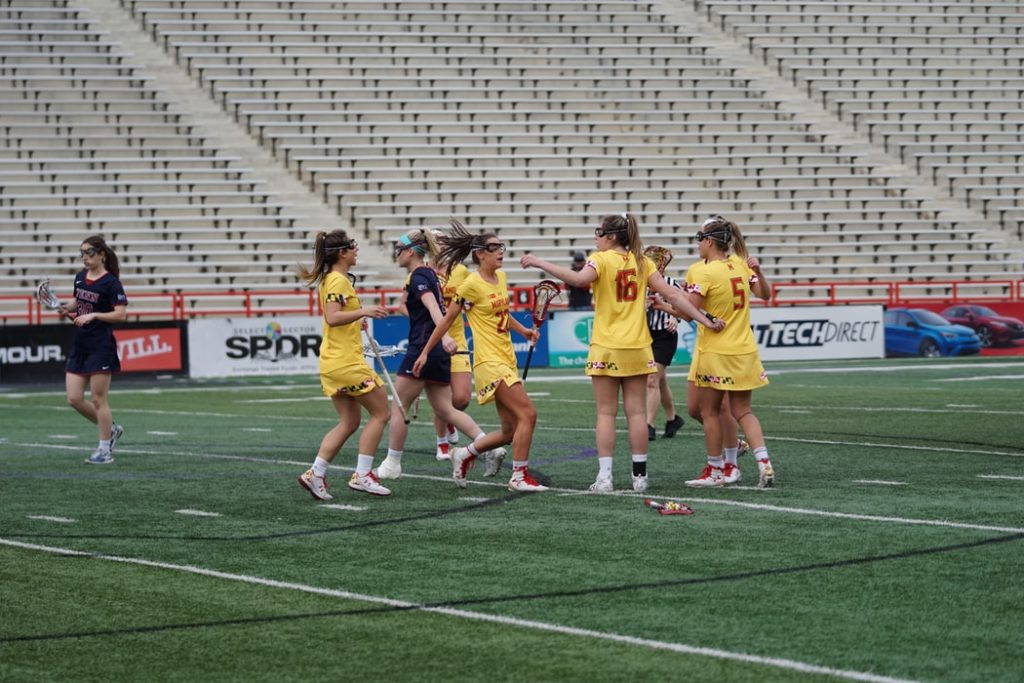
Tony, a girls’ youth soccer coach from Connecticut, contacted Kim for advice on how to manage the social woes that were fracturing his team, the Red Hawks. He’d already had heart-to-hearts with individual players and convened team meetings. “Good teams don’t argue,” he told his players. “They don’t speak to each other the way you girls do. Things have to change.” But airing out their issues did little to resolve things. “It’s like a whack-a-mole,” Coach Tony told Kim. “No matter what I do to deal with one problem, another one pops up. The team is disjointed. Some girls won’t pass to each other. There’s no harmony. What can I do?”
The facts: These were skilled eleven- and twelve-year-old players who had played organized youth sports since the tender age of five or six. Kim surmised that most of them had missed out significantly on the game-playing stage of play development. “Bring the girls together for ten or fifteen minutes at every practice and set them up with traditional games,” Kim suggested. “Try capture the flag first. If your practice gets rained out, find an indoor court and set up some four square matches. Then back off and let them play without your input.” He gave him a copy of the book he wrote called Games Children Play, which has a ton of games that have good skill-related activities while building collaboration through fun.
The coach did just that. He introduced a handful of games to his Red Hawks during their twice-a-week soccer practices. The arguments that ensued were pretty intense, but now their disputes were about rules and boundaries, and who got to do what rather than who was a hog or a nasty person—in other words, about the game at hand. They had to resolve them so they could get to play and have fun, which they did. If things came to a standstill, they worked things out so they could keep on playing. The coach was surprised by the result. It was almost like night and day. The Red Hawks became much more like a real team and started hanging out together a lot more.
The bottom line: These girls had missed the game-playing stage of play development because of their intense involvement in youth sports from an early age. When kids skip the games stage, they don’t have many opportunities to learn how to negotiate. They tend to default back to shouting at each other instead of figuring out how to resolve things. They don’t easily listen to each other and instead get stuck in a cycle of wanting things their way. It’s a hard thing to watch.
From a developmental perspective, during the tween stage—between the ages of nine and thirteen—the brain begins to process multiple variables. In other words, a child starts to realize, “I am not just me, but part of something greater. I am a part of a whole.”
At this age, kids’ brains are hungry for social experiences that can help strike a balance between “I am” and “we are,” between the child and her needs, and those of the group of kids she’s playing with. The ideal setting for such experiences is not really hyperstructured, adult-directed team sports—in which the child abides by a predetermined structure and the brain is more passive—but self-created, self-directed game play. In active play, she participates in the process of creating a new structure with her friends, takes part in it, and adapts it if it’s not working well.
After Coach Tony introduced a variety of semistructured games in his practices, the players’ relationships began to heal. The coach and his team parents made sure to set up social conditions that would further unify the team. They brought the girls together for pizza parties, postgame ice cream runs, and even a weekend dinner in one mom’s backyard or at the park. And the kids clamored so much to play games that Coach Tony made it a permanent part of their practice routine.
Playing games, learning to talk things out, and adapting rules and parameters to different circumstances helped the girls become more flexible and creative. They came up with a two-tiered scoring system to even out team strength during practices: Players with more experience were encouraged to pass more to their less-skilled teammates, because if these less skilled players scored, their goals were worth more. This helped improve everyone’s level of play. The Red Hawks became more cohesive, passing more effectively and setting up their defense and counterattacks more efficiently. Players were more willing to speak up if a teammate was hogging the ball rather than allowing feelings to fester.
The girls also became more creative in the face of stronger opponents. The strategy they came up with to combat a much bigger, faster team: shrink the size of the playing field by hunkering down in their own half and relying on occasional counterattacks for offense. Though the Red Hawks were not able to beat the bigger team, they reduced their scoring chances to such a degree that the girls lost by just three goals rather than being blown out as had happened at the beginning of the season. More important, the Red Hawks had become smarter players and better teammates—and had a whole lot more fun out there. ♦
From Kim John Payne, Luis Fernando Llosa, & Scott Lancaster. Beyond Winnning: Smart Parenting in a Toxic Sports Environment (Lyons Press, Connecticut, 2013)